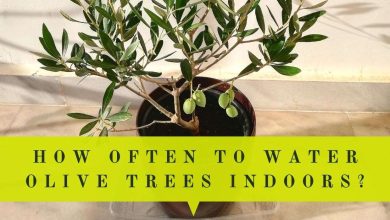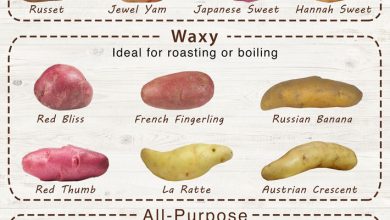16 Most Famous and Delicious Types and Varieties of Mango
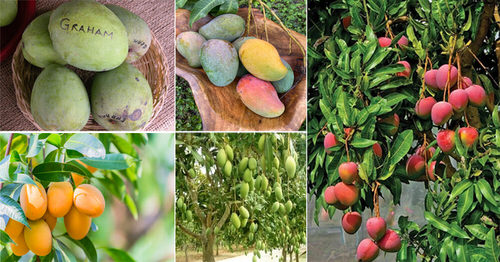
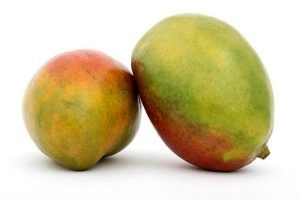 There are many delicious cultivars of mango, an exotic fruit highly prized throughout the world.
There are many delicious cultivars of mango, an exotic fruit highly prized throughout the world.
They are divided into three large fundamental groups. These are:
Indian cultivars
They are those marked by a strong smell of turpentine. They have a variable skin color, although some are usually very red skin. But generally speaking, most of its fruits are sweet and low in acids.
Florida cultivars
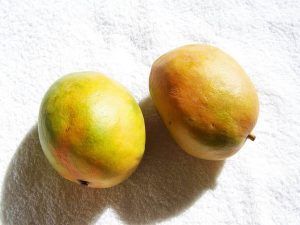 It is very popular in the world market for this delicious fruit. It was born as a seed plant from Mulgoba, in the year 1910 and stayed in the United States.
It is very popular in the world market for this delicious fruit. It was born as a seed plant from Mulgoba, in the year 1910 and stayed in the United States.
It has a striking reddish skin, very resistant, so it is easy to transport it to distant lands, without damaging the fruit.
Its acidity is high and from 1940 other varieties similar to this one from Haden were developed. These are: Tommy Arkins, Irwi, Haden Glen, Lippens, Van Dyke, Osteen, Sensation, Kensington, among others.
They are cultivars with a similar maturation period, of about 3 months in total, even outside of Florida, United States.
Indian and Filipino cultivars
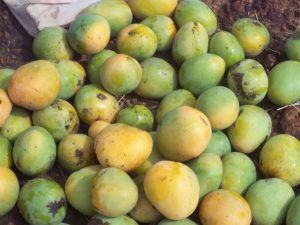 These fruits are sweet, they do not have a stringy pulp or a turpentine taste. The skin is more yellowish with accentuated greenish tones.
These fruits are sweet, they do not have a stringy pulp or a turpentine taste. The skin is more yellowish with accentuated greenish tones.
Carabao is considered the most important species in the Philippines, with great acceptance in the Japanese market. But it is also taken to Mexico, under the name of Manila.
In summary, the most popular commercial mango crops are the following:
irwin
It comes from the seeds of the Lippens variety, which was grown in Miami for the first time around 1939. Its fruit is ovoid in shape and medium in size, with a maximum weight of about 450 grams.
It has a red color that goes from faint to intense throughout the skin. The pulp has very little fiber and an exquisite sweet flavor, highly appreciated commercially.
haden glen
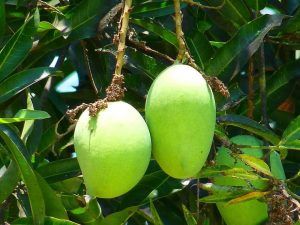 This species of mango comes from the variety cultivated in India Mulgoba, due to a cross made in Florida, United States.
This species of mango comes from the variety cultivated in India Mulgoba, due to a cross made in Florida, United States.
The fruit is medium in size, about 14 centimeters long and can weigh a maximum of 680 grams.
The predominant color is bright yellow with very striking purple spots and various white lenticels, with a rounded base.
The shell is also quite thick, firm and smooth, so its sweet pulp will come out easily, without many fibers being felt.
Tommy Atkins
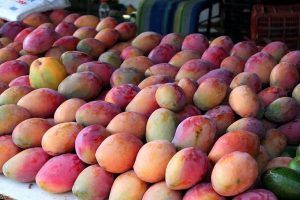 It is a species also native to Florida, from 1992. The fruit ranges from medium to large, so you can get ovoid-shaped specimens with a maximum weight of 700 grams.
It is a species also native to Florida, from 1992. The fruit ranges from medium to large, so you can get ovoid-shaped specimens with a maximum weight of 700 grams.
Puel color is yellow-orange with light and dark reddish spots.The tree is imposing, very tall and with strong branches with generously grouped fruits.
Keitt
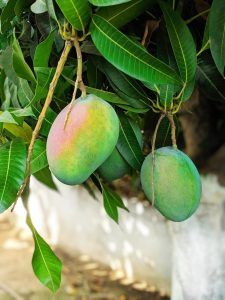 It is another species cultivated in Florida, United States, from a seed of the Brooks variety, from the year 1939.
It is another species cultivated in Florida, United States, from a seed of the Brooks variety, from the year 1939.
Its fruits are oval in shape, with medium to large specimens that can weigh more than 600 grams and a size of about 118 millimeters long, and more.
The skin is yellow with very striking red spots, but it is not usually easily separated from the intense yellow pulp, which lacks fibers and has a sweetish taste.
feeling
This variety is also cultivated in Miami, Florida, United States, since 1992, although the origin of the seed is unknown.
The fruits are small, with a maximum weight of over 300 grams, oval in shape, a spectacular intense yellow color with reddish spots and numerous small lenticels, also yellow.
lippens
It comes from a Haden seed, which began to be cultivated in Florida, United States, at the beginning of the year 1931. Its fruit is about 11-12 centimeters long and an average weight of more than 500 grams.
The intense yellow skin contrasts with a bright red that predominates on one side. It has few yellow lenticels and the sweet pulp has no fibers.
Zill
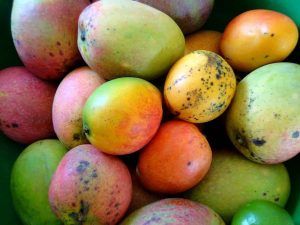 It also comes from a seed of the Haden variety, planted in Florida around 1922.
It also comes from a seed of the Haden variety, planted in Florida around 1922.
Its fruit is rather small, with a maximum weight of about 300 grams and a reddish color that fades to pink on a yellow background.
The peel separates easily from the very firm, fiberless, yellow pulp with a slight turpentine flavor. The tree of this variety is very vigorous, with abundant foliage and an open crown.
Van Dyke
It is also a widely cultivated variety in the United States, Florida region. Its fruit has a very attractive red skin, with a very juicy pulp, without fiber, of great commercial value, despite the fact that the fruit is rather small, with a maximum weight of 400 grams.
It should be noted that many current varieties come from cultivars such as:
Mulgoba
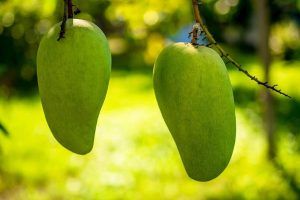 It has its fruits in an oval-globose shape, with an average size between 9-12 centimeters in length. The color of the skin is very yellow, with red tints in the area of the apex and in the peduncle.
It has its fruits in an oval-globose shape, with an average size between 9-12 centimeters in length. The color of the skin is very yellow, with red tints in the area of the apex and in the peduncle.
Its skin is thick, resistant and the yellow pulp has no fibers, it is soft on contact with the palate and has a pleasant aroma and flavor, with an exquisite acid touch.
This variety grows very well in dry climates. It is grown vigorously in Florida, the United States, Israel and the Spanish Canary Islands.
pairi
This variety of mango has an estimated weight of 200-300 grams, with estimated dimensions between 7-9 centimeters long and 7-9 centimeters wide. The color of the rind is yellowish green, but towards the base it is a beautiful scarlet red, with paler yellow spots.
The pulp is yellow – orange, juicy and without disturbing fibers, with an intense aroma and thick seed. It is also grown in Israel, the Canary Islands and, of course, in Florida and Hawaii, United States.
Amini
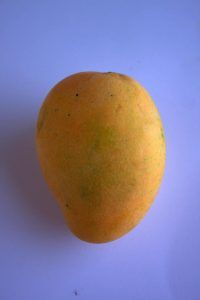 The mangoes of this variety are kidney-shaped, with a small size and a maximum weight estimated at about 200 grams, with dimensions between 7.9 centimeters long and 7-8 centimeters wide.
The mangoes of this variety are kidney-shaped, with a small size and a maximum weight estimated at about 200 grams, with dimensions between 7.9 centimeters long and 7-8 centimeters wide.
The fruit has a yellowish green color, with scarlet tints and pale yellow spots. The skin is thick, however its pulp is of excellent quality, it does not have fibers and its color is pale red and abundant juiciness.
It is also grown in the Canary Islands.
Sansersha
The fruits of this variety are quite large, with a weight ranging from 500 grams to 1 kilogram and dimensions of 10-12 cm in length and 9-11 cm in width. The skin is very yellow, but it also has reddish spots of an intense tone, along with yellowish moles.
It is widely used for the production of mango preserves, because the pulp is very fleshy, acidic, quite juicy and has no fibers.
Cambodian
It is a fruit of regular size, about 10-12 cm long and 6-7 cm wide. It has an elongated shape and is yellowish green with few spots. The skin is quite soft and easily separates from the pulp.
It is very fleshy, its pulp is juicy and has a slightly acid flavor and strong aroma.It is widely cultivated in Cambodia, where it comes from.


